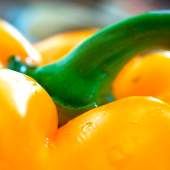Thanksgiving

“Grateful for each hand we hold
Gathered round this table.
From far and near we travel home,
Blessed that we are able.”
— “Thanksgiving Song” (Mary Chapin Carpenter)
Anyone who has ever prepared or partaken of a Thanksgiving dinner probably has a funny story about the experience – thigh-slapping tales of leaving the plastic bag of innards inside the turkey while it roasted, the family dog stealing the bird from the kitchen counter, the oven catching on fire, a crucial ingredient forgotten, etc. Perhaps you frantically dialed the Butterball Turkey Talk-Line so the dinner could be salvaged, or maybe you avoided the trauma altogether and gratefully decamped to a restaurant to let someone else do the cooking.
Whether you spend it feuding with family members, rushing out afterward to the mall to battle for bargains on Black Friday (or Thursday), or sparring over which football game to watch on TV, the main event involves the mass consumption of dishes unlikely to be seen again until next Thanksgiving. Ever wonder about the origins of some of them? Well, wonder no more…
Green Bean Casserole
This perennial favorite was based on the premise that everyone has a stockpile of cream of mushroom soup in their pantry, and a bag of green beans lining the back of the freezer. Thank you, Dorcas Reilly of the Campbell Soup Company, who dreamed this up in 1955! (And don’t forget the French-fried onions on top – everyone knows they’re the best part.)
Stuffing/Dressing
If it cooks inside the bird, it’s stuffing; if not, it’s dressing. Whatever you choose to call it, stuffing/dressing goes all the way back to the Roman Empire. Boxed (“stove top”) stuffing was invented by home economist Ruth Siems in 1972 after numerous experiments with the reconstitution of bread crumbs. Kudos to you, Ruth.
Cranberry Sauce
Cranberries alone were, and are, too tart to be enjoyed without the addition of sugar, which was almost unheard-of in the days of the Pilgrims. So, cranberry sauce came much later – you couldn’t buy it anywhere until 1912, and the familiar canned variety first appeared during World War II. Cranberries are one of the few fruits unique to our shores, and Native Americans were in the vanguard of using them for medicinal benefits, and also as a natural textile dye.
Sweet Potatoes/Yams
It’s difficult to imagine Thanksgiving without this mainstay, but for Americans they were fairly late to the game as they needed a Southern climate to grow; there is no mention of them for more than 150 years after the first Thanksgiving. Sweet potato pie was not even listed in American cookbooks until 1796.
Pumpkin Pie
This seasonal treat originated, as so many things do, in France (ironically, the pumpkin is native to North America, and had to be imported). In his cookbook Le Vrai Cuisinier Francois (The True French Cook), 17th century chef Francois Pierre la Varenne wrote: “Tourte of pumpkin – Boile it with good milk, pass it through a straining pan very thick, and mix it with sugar, butter, a little salt and if you will, a few stamped almonds; let all be very thin. Put it in your sheet of paste; bake it. After it is baked, besprinkle it with sugar and serve.” (No word on how he made his “sheet of paste,” or what kind of oven was available in which to bake it.)
Do you have any Thanksgiving stories? Cooking disasters? Restaurant memories? Please share in the comments below. And enjoy those leftovers!





